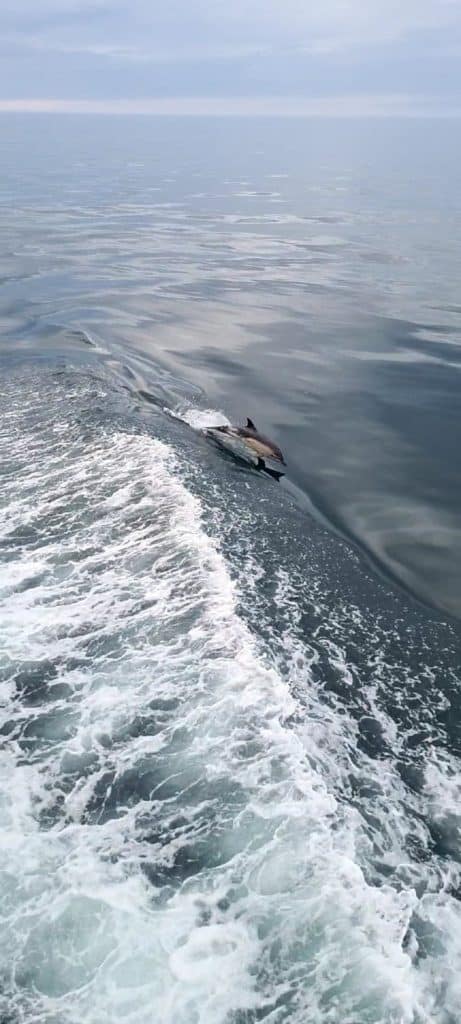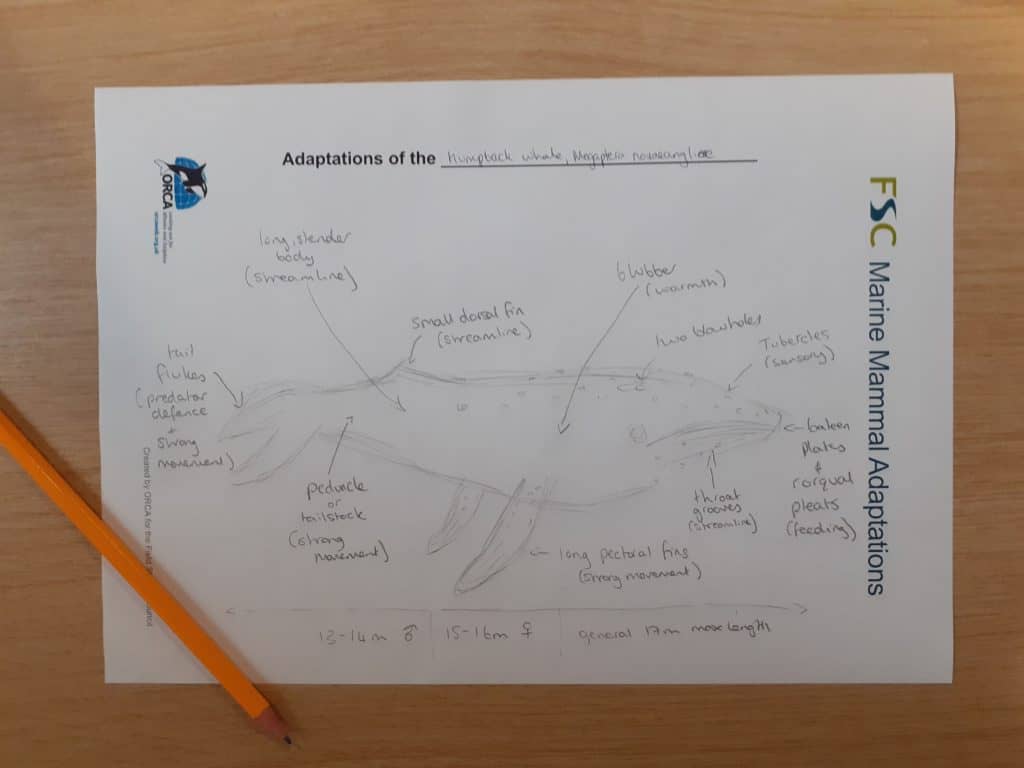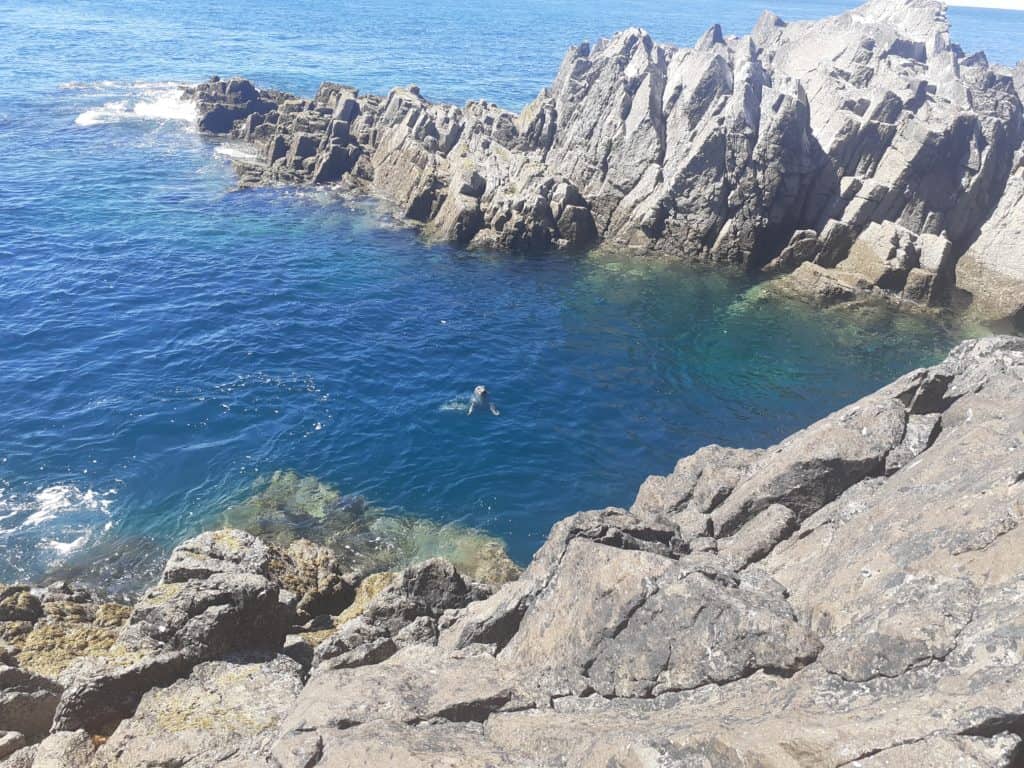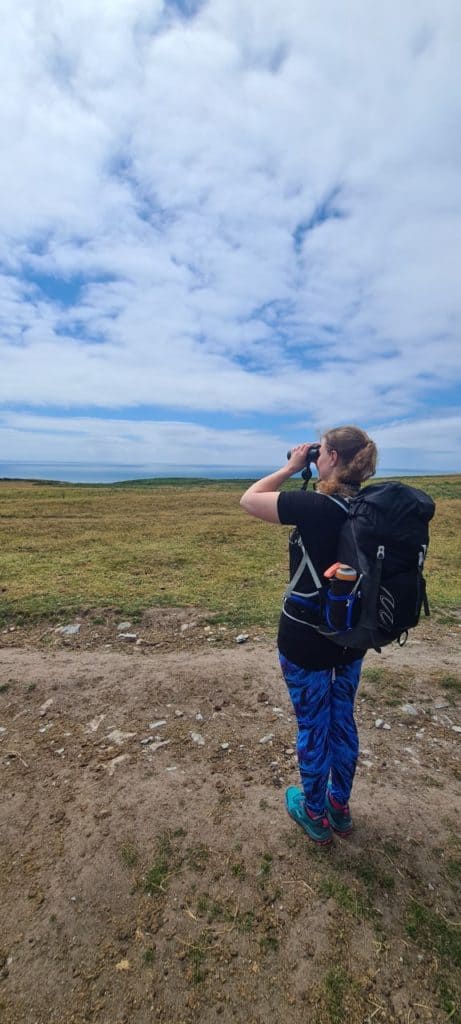– Learning about Marine Mammals
Blog by Rachel Davies
The natural world is fascinating, and with so much variation, it is difficult not to want to explore it all! When I was younger, I wanted to be a marine biologist and spend my life working at sea. As I got older, this evolved and I ended up working mostly with terrestrial animals, and later with invertebrates.

However, the sea and the marine environment have always been a draw for me and, after a recent trip to Lundy Island, I decided to jump back into the marine world and re-start my volunteering with ORCA. Looking online for other marine volunteering and training, I thought the Field Studies Council courses would be the perfect complement to re-starting volunteering and refreshing my knowledge on marine mammals.
I started my online learning with ‘Discovering Marine Mammals: Biology and Ecology’, which is listed as a level 1 course; and then progressed on to ‘Discovering UK Seals: Identification, Ecology and Conservation’, which is listed as a level 2 course. Each course required me to work through some online material and activities, usually taking about 2 hours per week for the level 1 course and 3 hours per week for the level 2 course. There was also an optional 45-minute Zoom meeting with the course tutor each week, which was also recorded and uploaded online (really useful for when I wasn’t able to attend the set Zoom times).
Discovering Marine Mammals
This course was written in partnership with ORCA. ORCA is a charity that is dedicated to studying and protecting whales, dolphins and porpoises in UK and European waters. They work with citizen scientists to collect important data on marine mammals, and work to identify and protect critical habitats in UK and European waters and beyond.
This three-week course is taught by Ashleigh Kitchiner, an ORCA Cruise Conservationist and a Marine Mammal Observer in the oil and gas industry.

This course was really useful for reinforcing basic information, such as the fact that all mammals have hair! Having studied Zoology, I know that all mammals have hair and yet I was still surprised to think of whales and dolphins as having hair!
Although this wasn’t an identification course, the course tutor did slip some useful ID tips into the Zoom sessions which were eagerly received. Ashleigh would tell us the species name of marine mammals pictured in her slides, and she would also share tips throughout. For example, did you know that male orca have really large dorsal fins compared to females? This makes them really easy to spot in a pod as their dorsal fins tower above the others.
And it was really interesting to hear about different volunteer opportunities and citizen science projects related to whales and dolphins. The one that really stood out to me was the Happy Whale project which asks people to submit photos of their marine mammal sightings so that they can use these photos to identify whales using their unique markings. This allows whales to be tracked around the world!
Discovering UK Seals
This course was written in partnership with the Seal Research Trust in Cornwall. The Seal Research Trust is an evidence-based conservation charity that works with citizen scientists to collect important data on the grey seal- a globally rare marine mammal.
This four-week course is taught by Sue Sayer, founder of the Seal Research Trust.
This course provided an in-depth look at the two resident seal species we have here in the UK, the Common seal, Phoca vitulina, (also known as the Harbour seal) and the Grey seal, Halichoerus grypus. It also briefly looked at the five species of vagrant seals that occasionally visit the UK, the Bearded seal, Harp seal, Ringed seal, Hooded seal and Walrus.

My favourite bit of this course was looking at the different behaviours of seals and I can’t wait to go seal-watching and look for these behaviours in the field. I particularly liked learning about ‘bananaing’, which is where a seal points its head and tail up into the air, giving it the body shape of a banana! It does this for two reasons, one is for a body stretch and the other is to avoid getting these extremities cold when sitting on cold sand or being washed by cold waves.
The main surprise in this course was how difficult seal ID was. I did think the course would include more information on this topic, but then I realised there is a second, more advanced course dedicated to just this! I’ll certainly be looking out for that one when it becomes available. In the meantime, I did learn some useful ID tips:
- Grey seals are known for looking like dogs- they have a large head compared to their body, a flat nose on a longer snout and parallel nostrils.
- Common seals are known for looking like cats- they have a small head compared to their body, with a concave forehead. They also have a shorter snout and v-shaped nostrils.
This course concluded with a look at the conservation issues facing seals and other marine mammals, and some of the issues facing marine habitats in general. The course offered some helpful suggestions as to what each individual can do to help marine mammals.

Overall, I really enjoyed my online learning experience. I enjoyed being able to work at my own pace and having the flexibility around my own learning. Although I wasn’t able to attend many of the Zoom meetings in-person, I was able to watch all of the recordings and I liked the variety of information presented and the various topics discussed based on people’s questions. The Q&A forums worked really well on both courses, and it was nice to be able to read other people’s questions and all of the answers.
I’m looking forward to continuing my online learning with the next course offered by the Field Studies Council and ORCA ‘Conservation of Marine Mammals’, starting on November 3rd. And I’ll eagerly await the next seal course being released too!
If you’d like to join any of our marine courses, you can find out more here.
If this has inspired you to get out and look for marine mammals, why not take along our marine mammal identification fold out guide to help you identify what you see.
